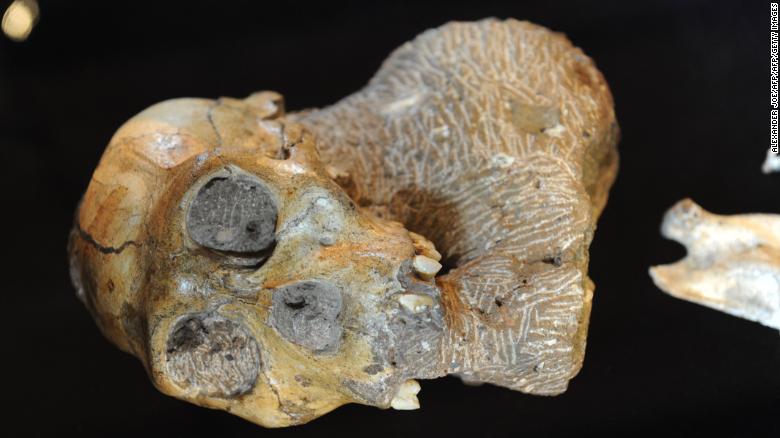Early humans were
still swinging from trees two million years ago, scientists have said, after
confirming a set of contentious fossils represents a "missing link"
in humanity's family tree. The fossils of Australopithecus sediba have fueled
scientific debate since they were found at the Malapa Fossil Site in South
Africa 10 years ago.
And now
researchers have established that they are closely linked to the Homo genus,
representing a bridging species between early humans and their predecessors,
proving that early humans were still swinging from trees 2 million years ago.
The Malapa site,
South Africa's "Cradle of Humankind," was famously discovered by
accident by nine-year-old Matthew Berger as he chased after his dog. That
stroke of luck eventually led to this week's finding, detailed in the journal "Paleoanthropology." The
findings help fill a gap in humankind's history, sliding in between the famous
3-million-year-old skeleton of "Lucy" and the "handy man"
Homo habilis, which was found to be using tools between 1.5 and 2.1 million
years ago.

They show that
early humans of the period "spent significant time climbing in trees,
perhaps for foraging and protection from predators," according to the
study in the journal "Paleoanthropology."
“This larger
picture sheds light on the lifeways of A. sediba and also on a major transition
in hominin evolution,” said lead researcher Scott Williams of New York
University.

The remains of an hominid, may be one of the most significant palaeoanthropological discoveries in recent times, are unveiled on April 8, 2010 during a press conference in Maropeng. Two skeletons of a new hominid species dating back two million years and found in South Africa have shed light on a previously unknown stage in human evolution, scientists said today. Baptized Australopithecus sediba, the partially fossilized specimens -- an adult female and a juvenile male -- were found in 2008 in a cavern 40 kilometers (24 miles) from Johannesburg. AFP PHOTO / ALEXANDER JOE (Photo credit should read ALEXANDER JOE/AFP/Getty Images)
'Still so much to discover'
Two partial
australopith skeletons -- a male and a female - were found in 2008 at a
collapsed cave in Malapa, in South Africa's "Cradle of Humankind." "Australopithecus"
means "southern ape," a genus of hominins which lived between around
4 and 2 million years ago. Their discovery set off years of debate in the
scientific community, with some rejecting the idea that they were from a
previously undiscovered species with close links to the homo genus and others
floating the idea that they were from two different species altogether.
But the new
research has laid those suggestions to rest, and outlined "numerous features"
the skeletons share with fossils from the homo genus.
Australopithecus
sediba's hands and feet, for instance, show it was spending a good amount of
time climbing in trees. The hands have grasping capabilities, which are more
advanced than those of Homo habilis, suggesting it, too, was an early
tool-user. The researchers of the paper to highlight the remarkable story of
how the fossils were found, pointing out that other dramatic clues to
humanity's history are still waiting to see the light of day.
“The first fossil of Au. Sediba was discovered by Matthew Berger, then a nine-year-old, who happened to stop and examine the rock he tripped over while following his dog Tau away from the Malapa pit,” they wrote. “Imagine for a moment that Matthew stumbled over the rock and continued following his dog without noticing the fossil. If those events had occurred instead, our science would not know about Au. sediba, but those fossils would still be there, still encased in calcified clastic sediments, still waiting to be discovered.
The fortuitous discovery of the Malapa fossils and other similarly fortuitous recent finds should be reminders to us all that there is still so much to discover about our evolutionary past,” the authors concluded.
Comments
Post a Comment